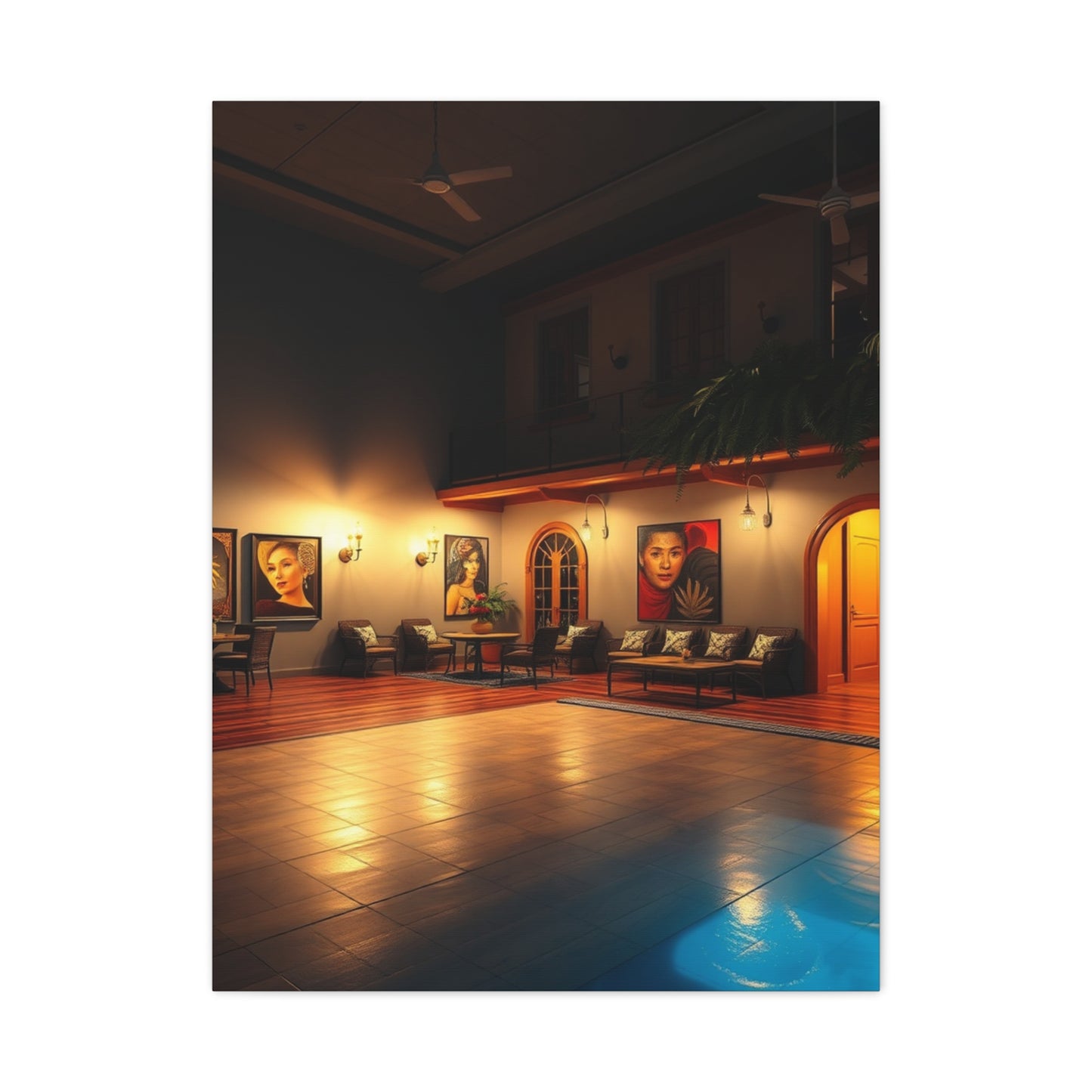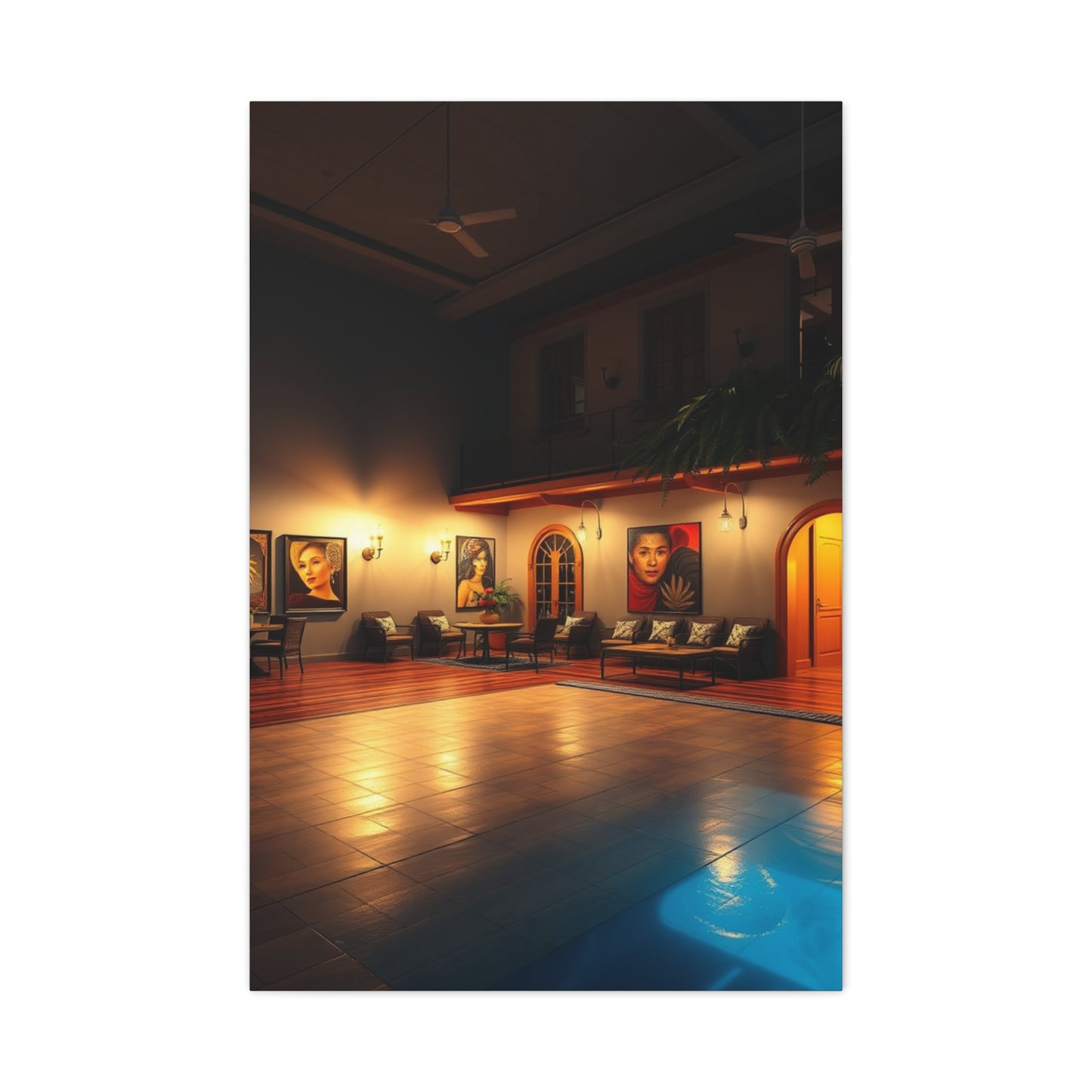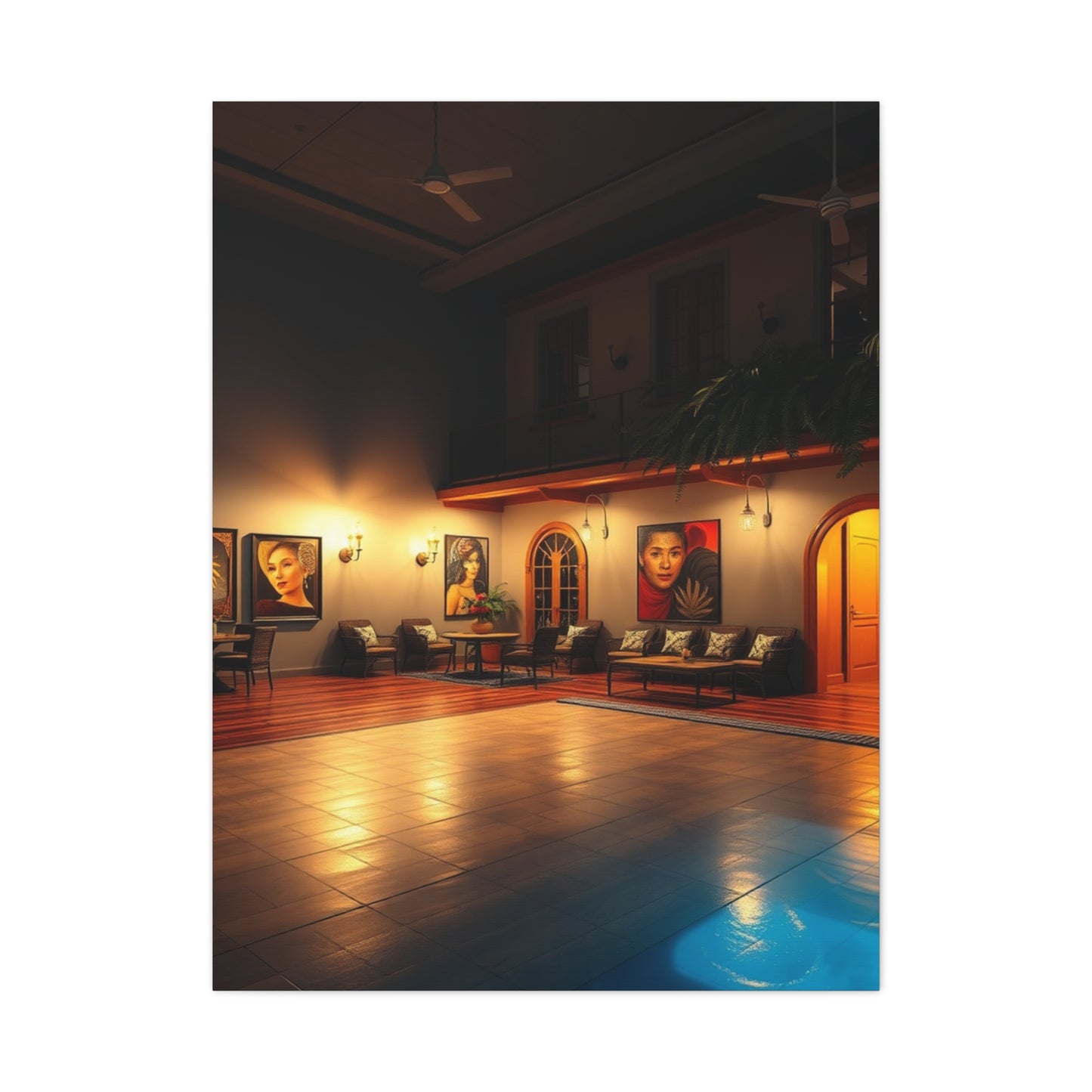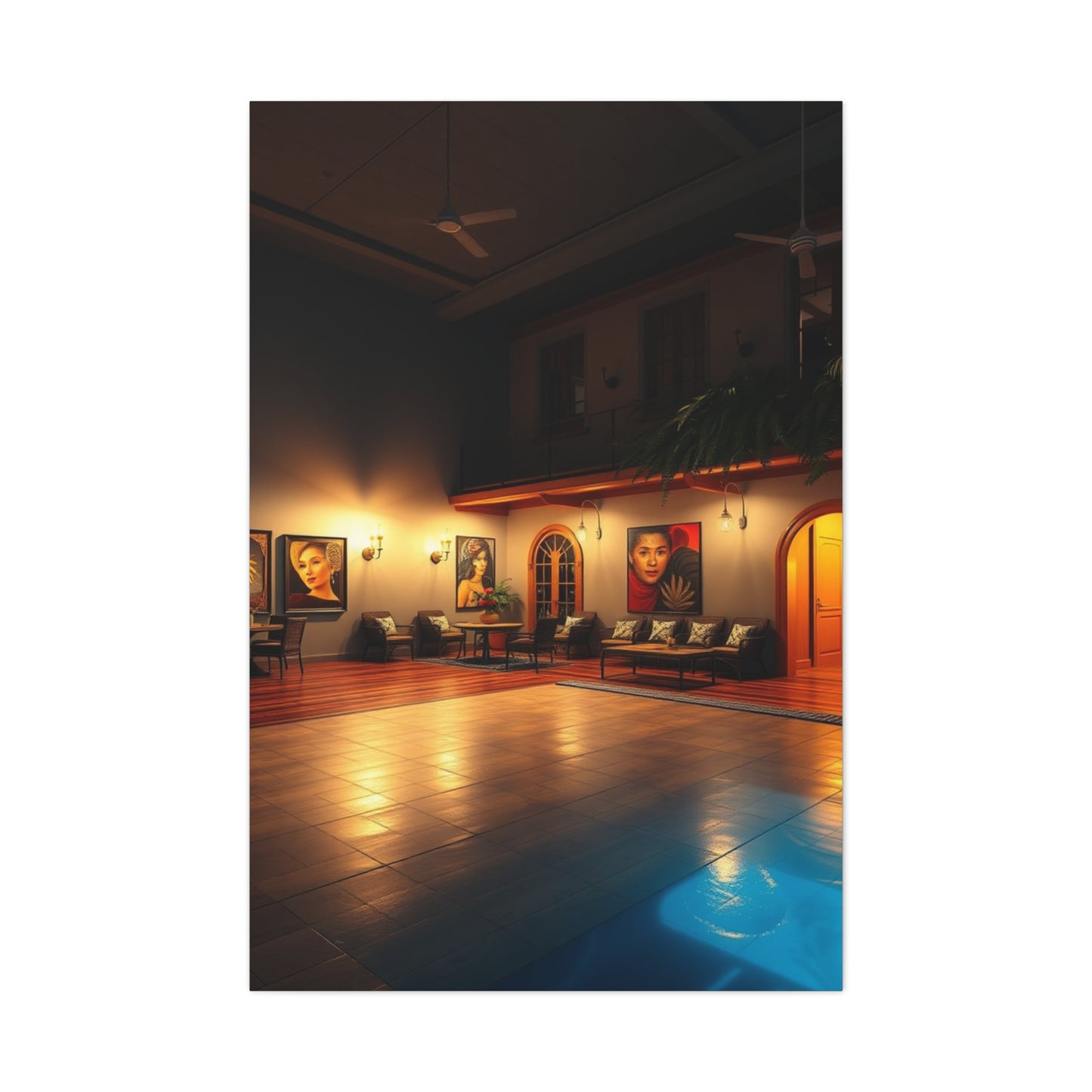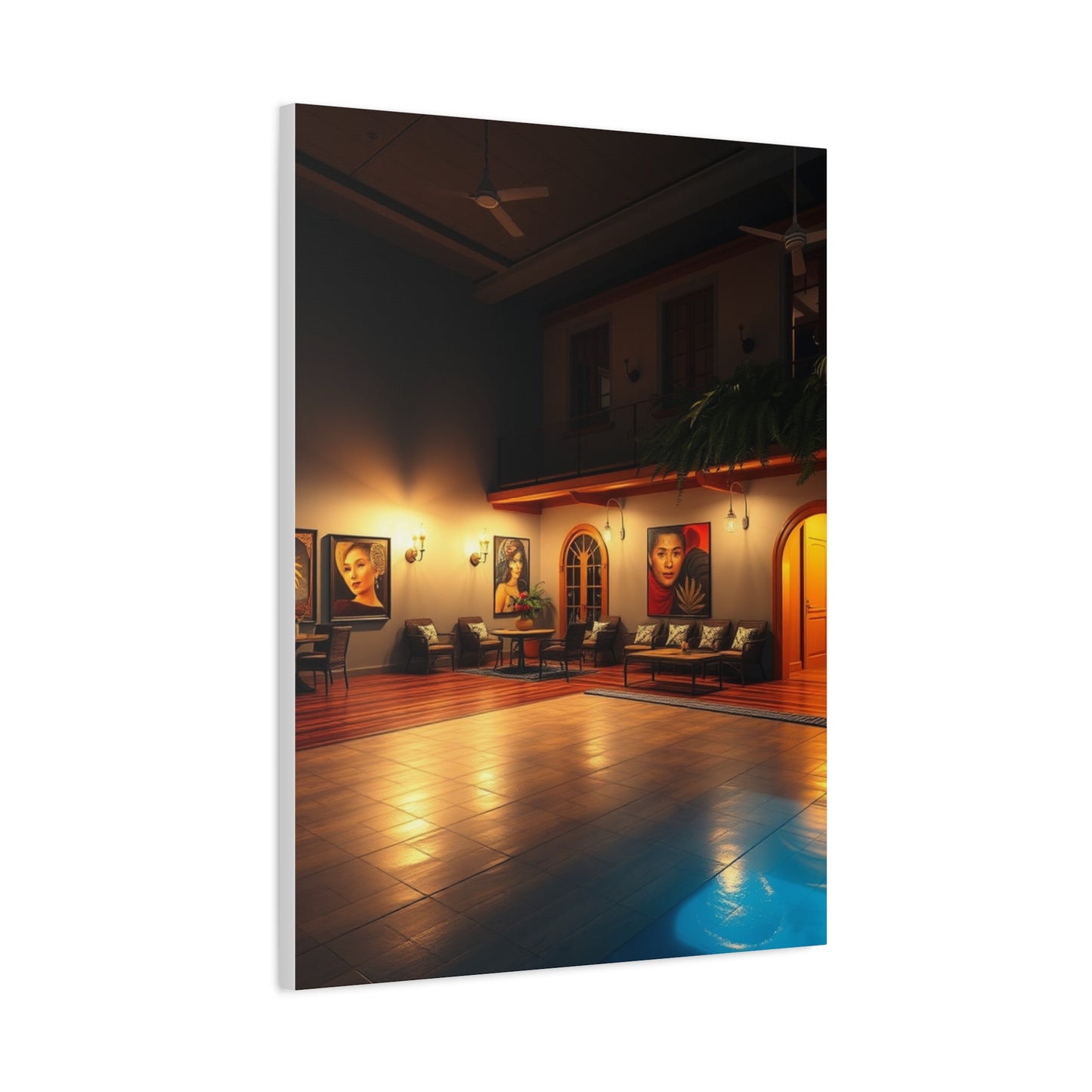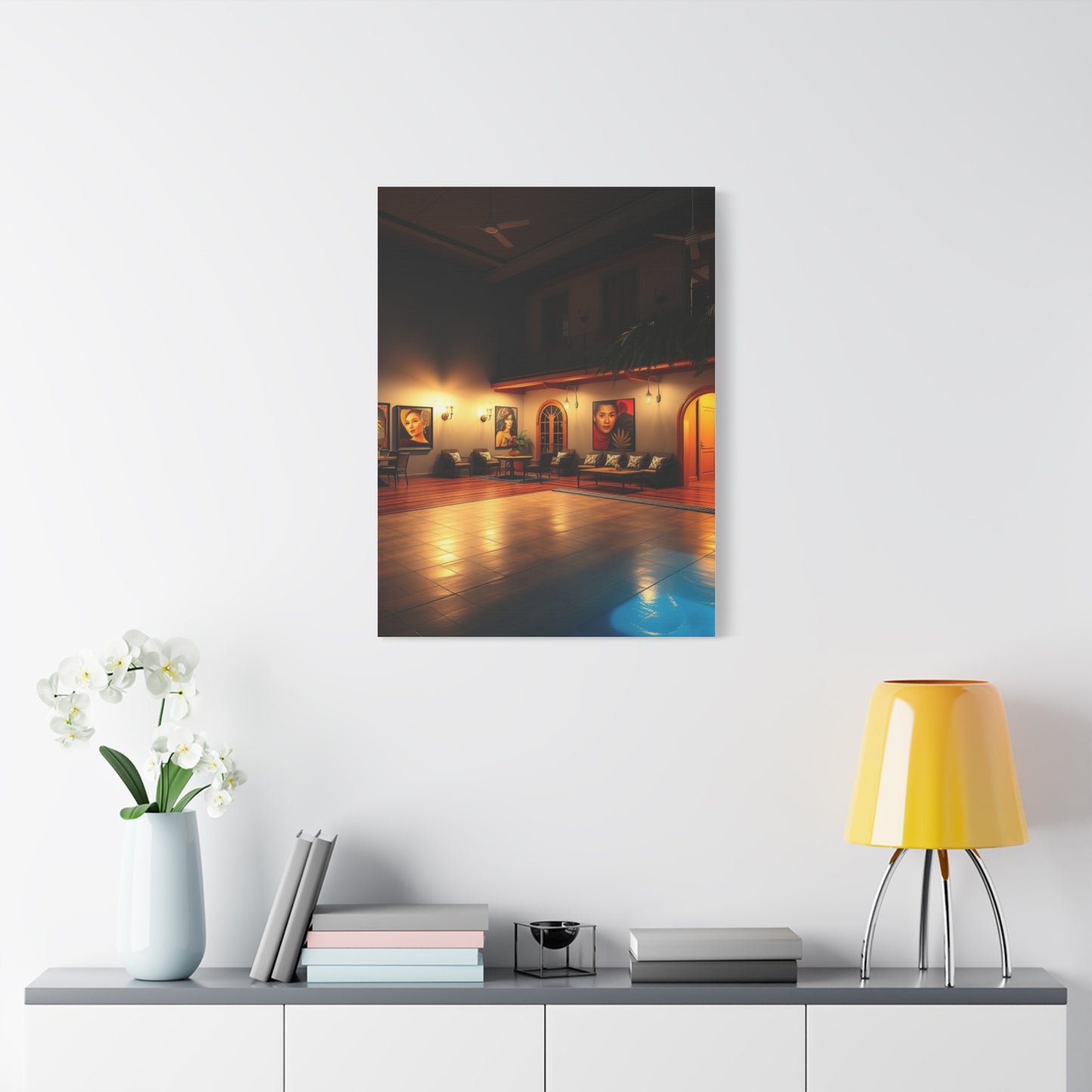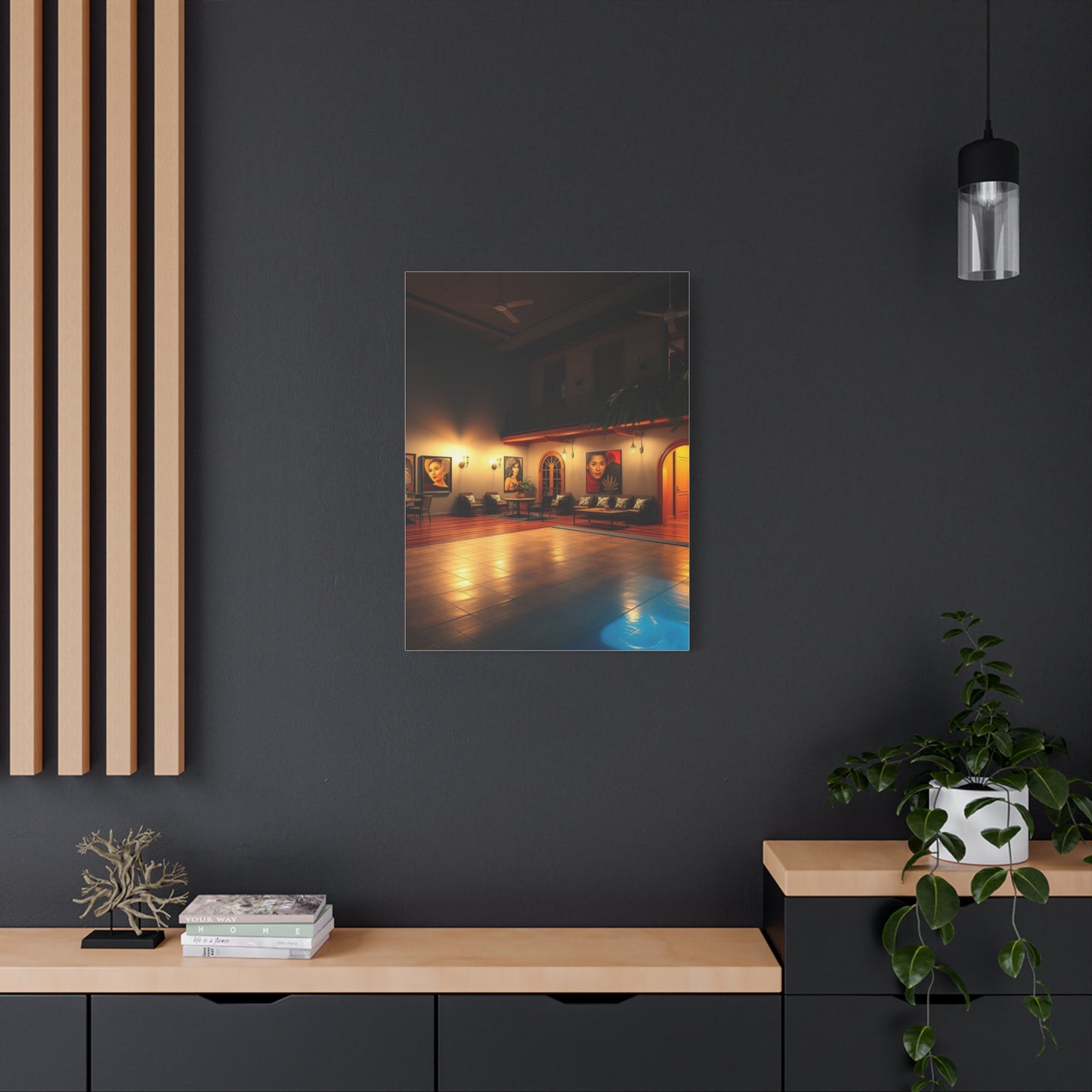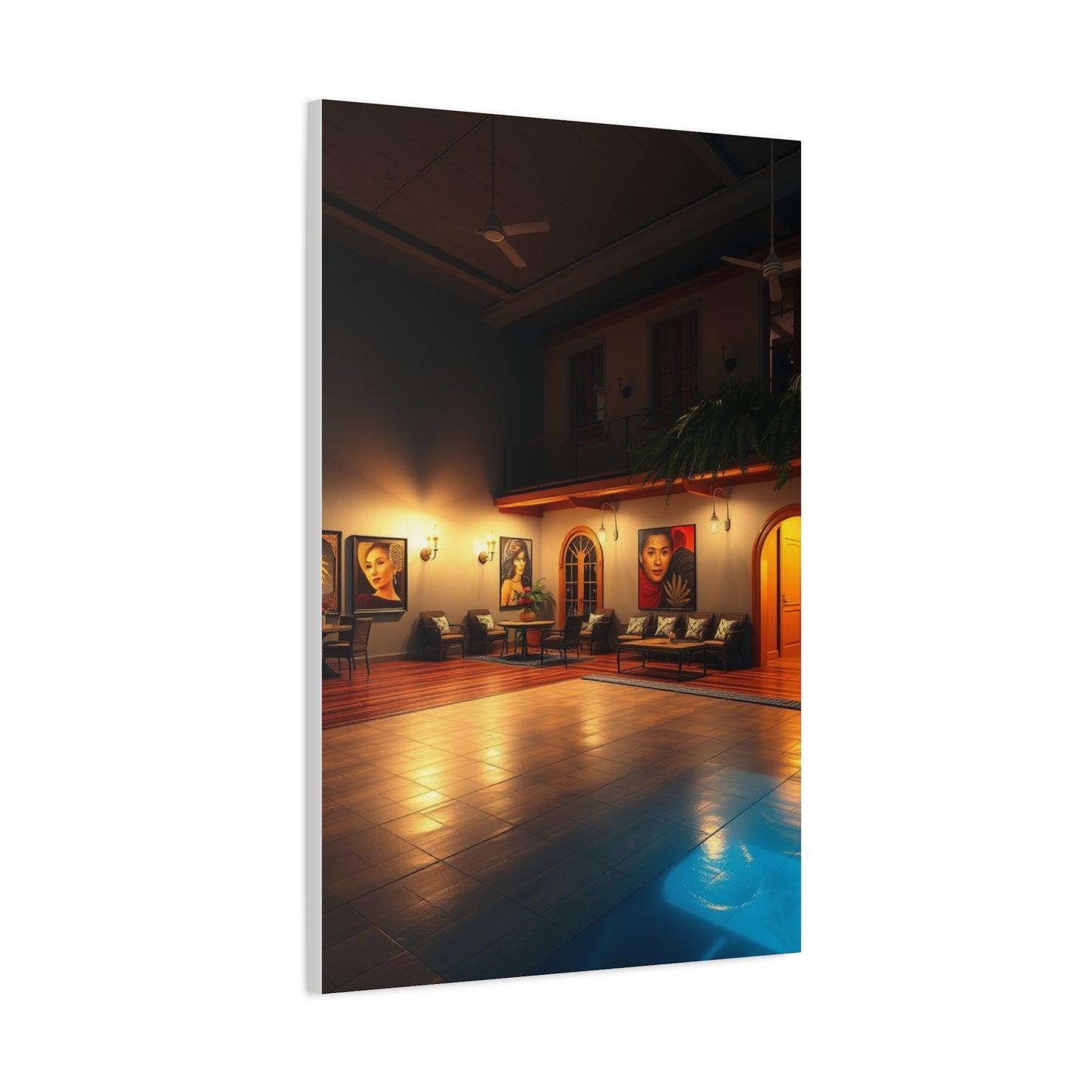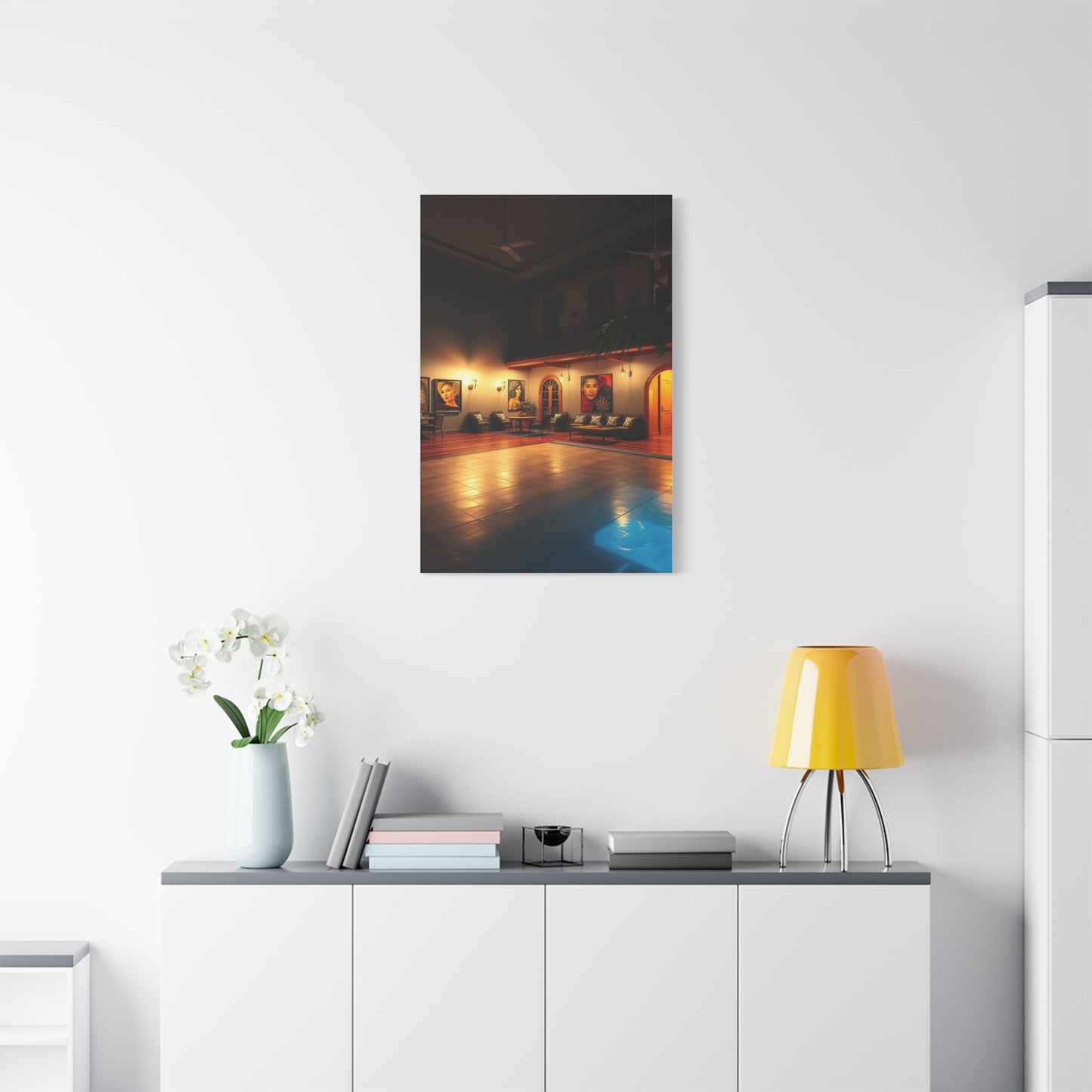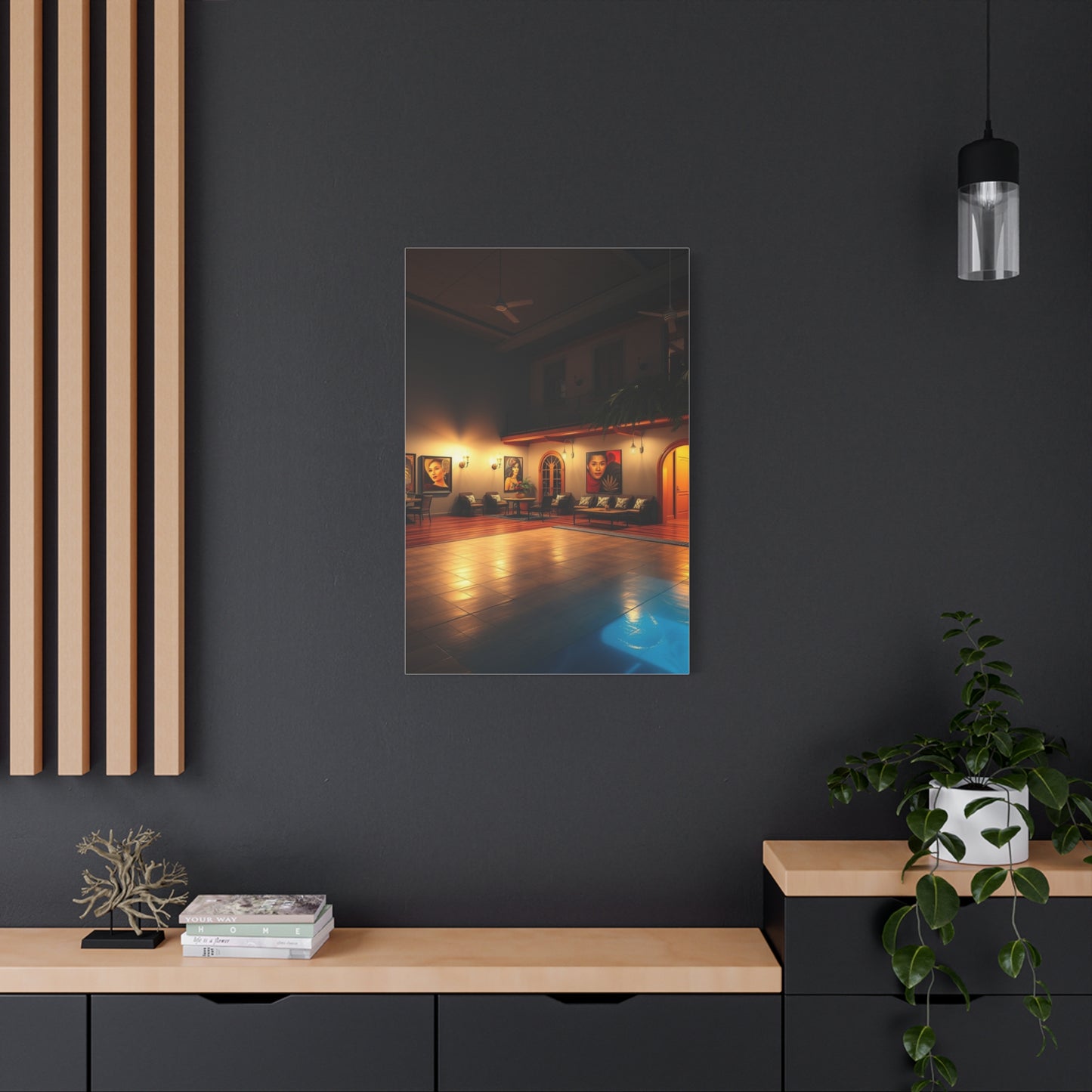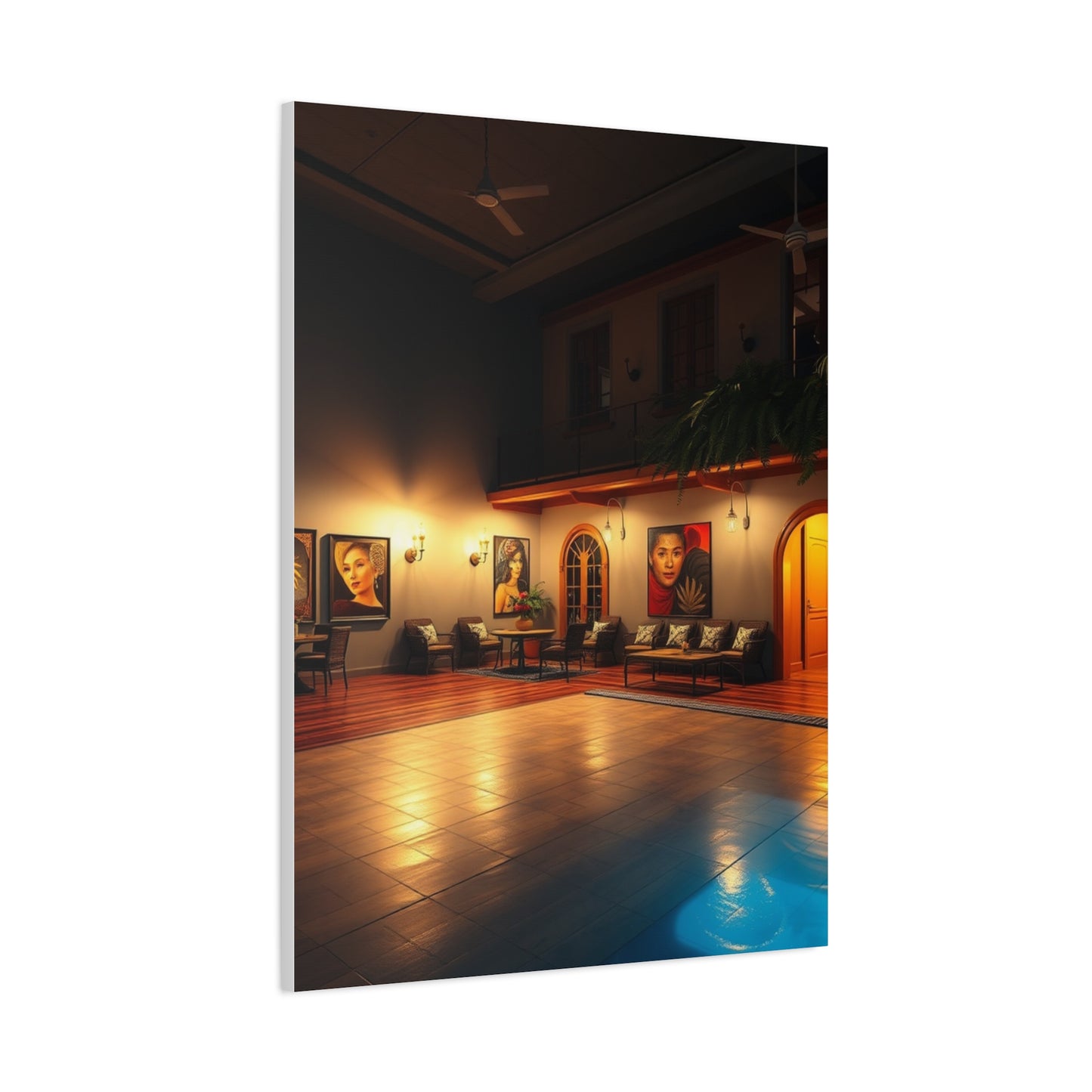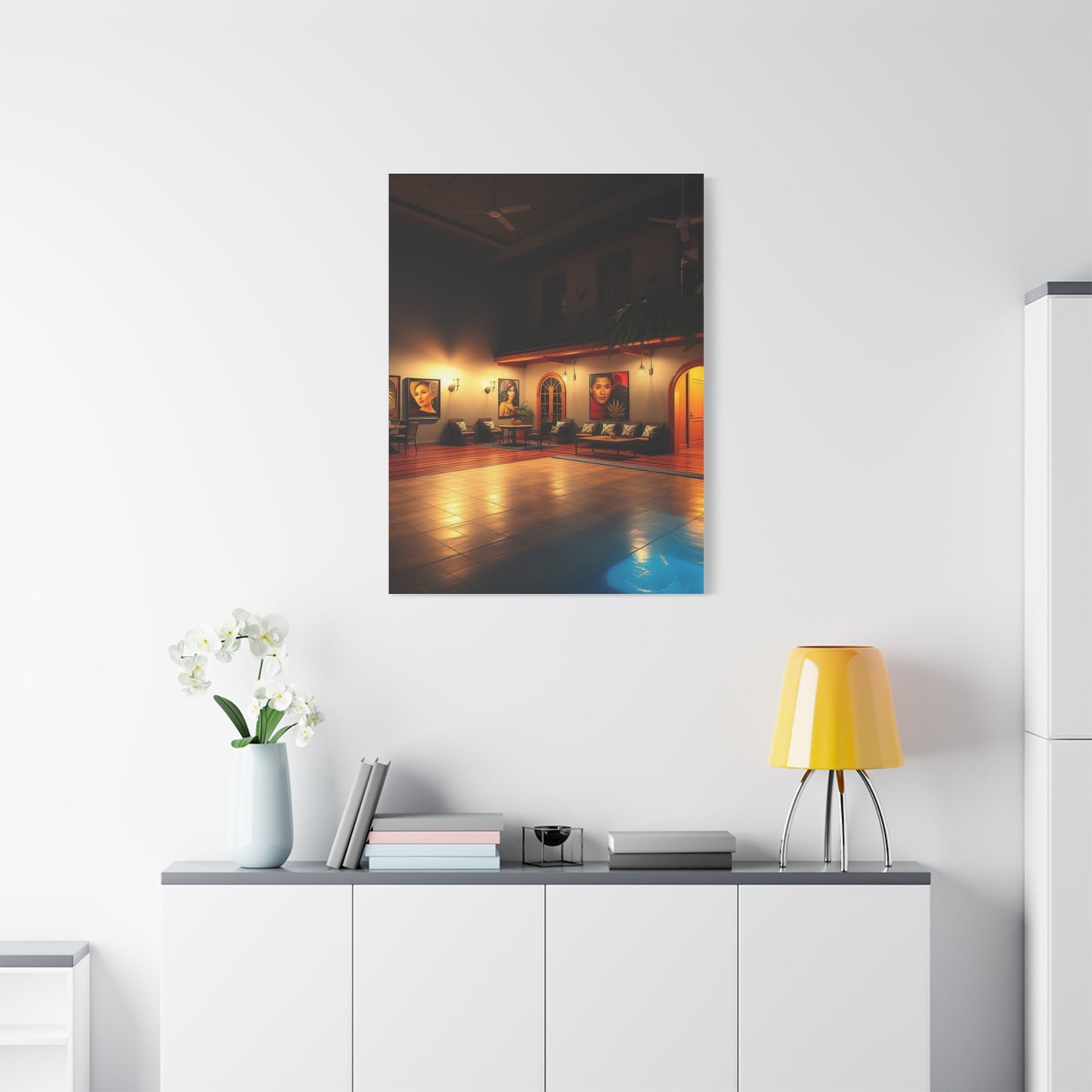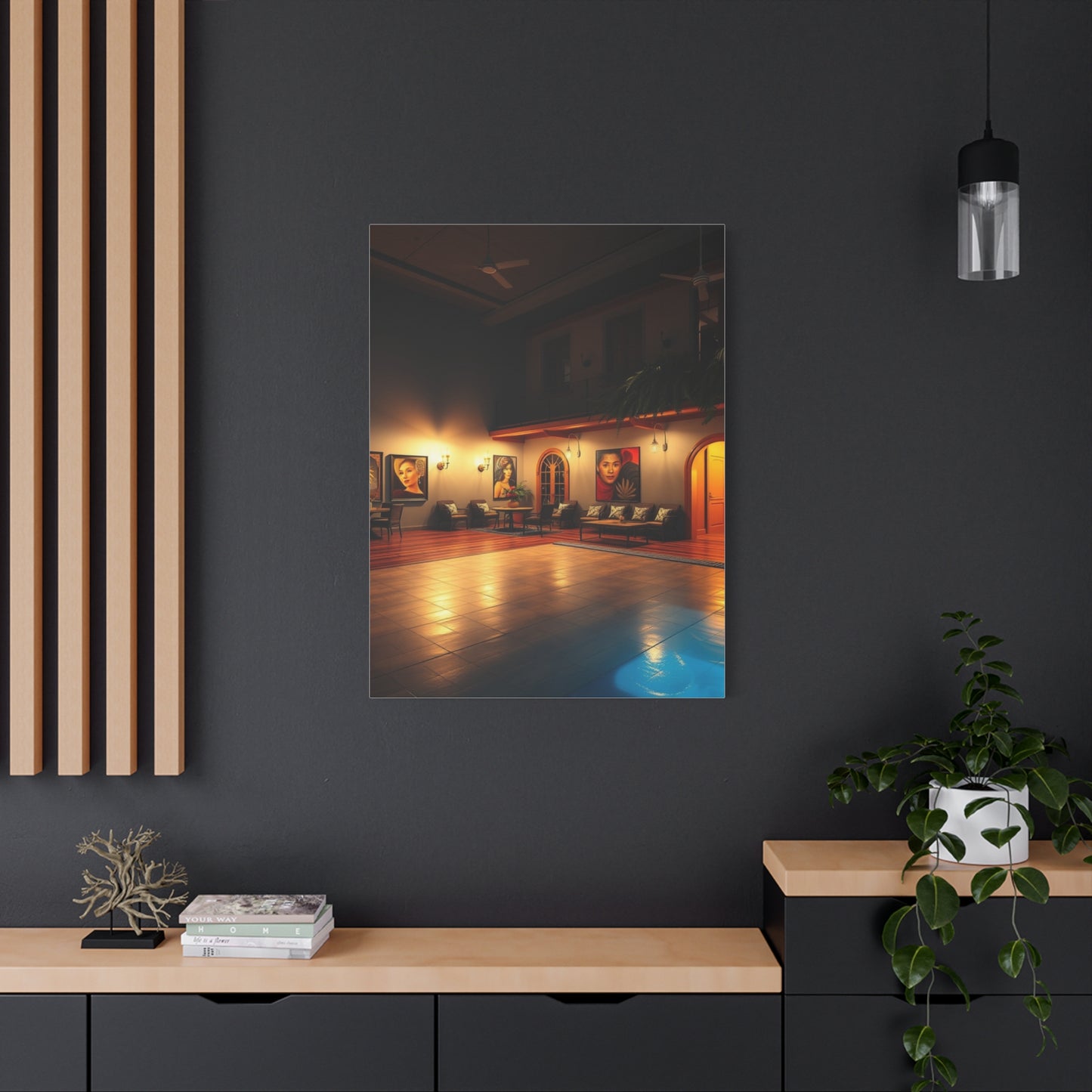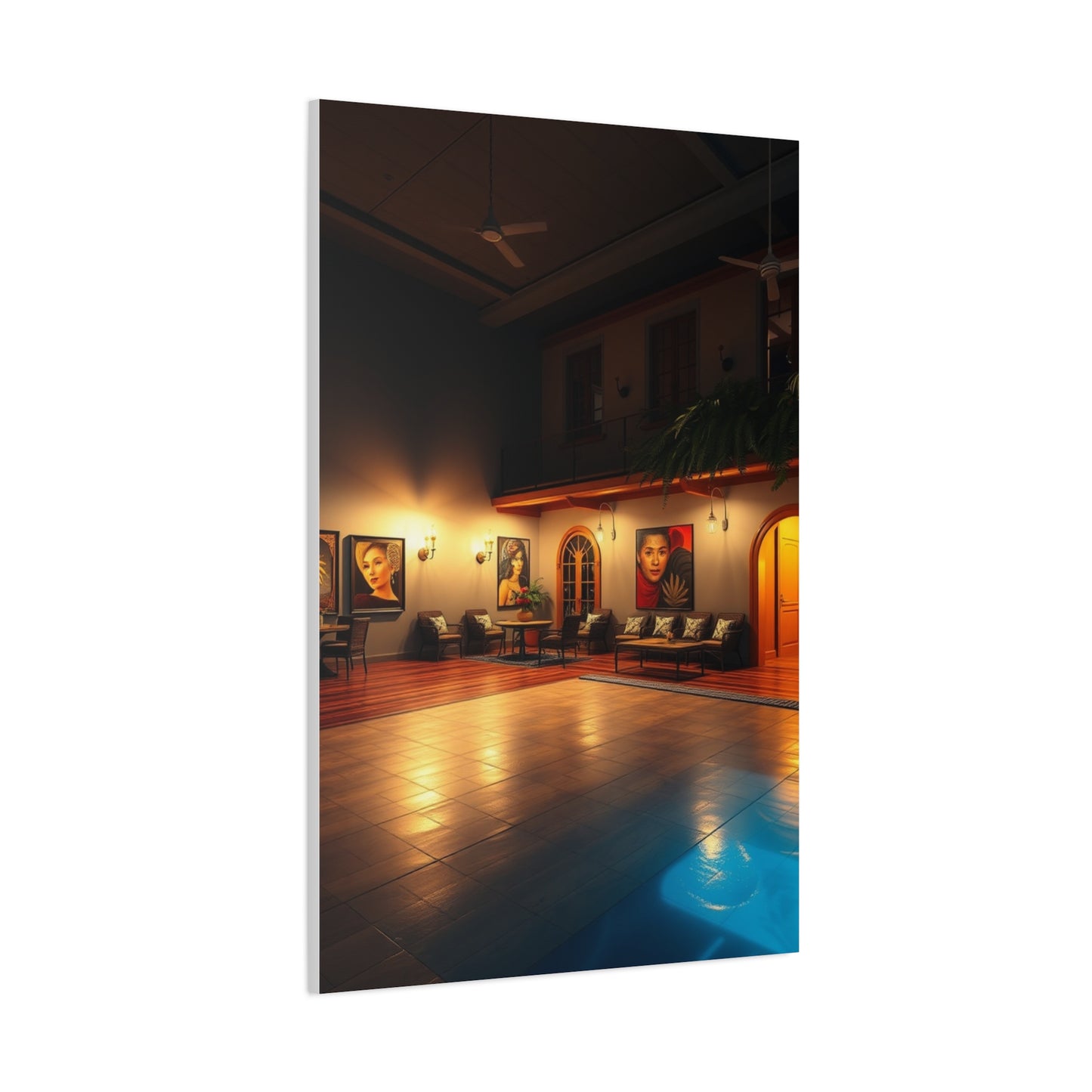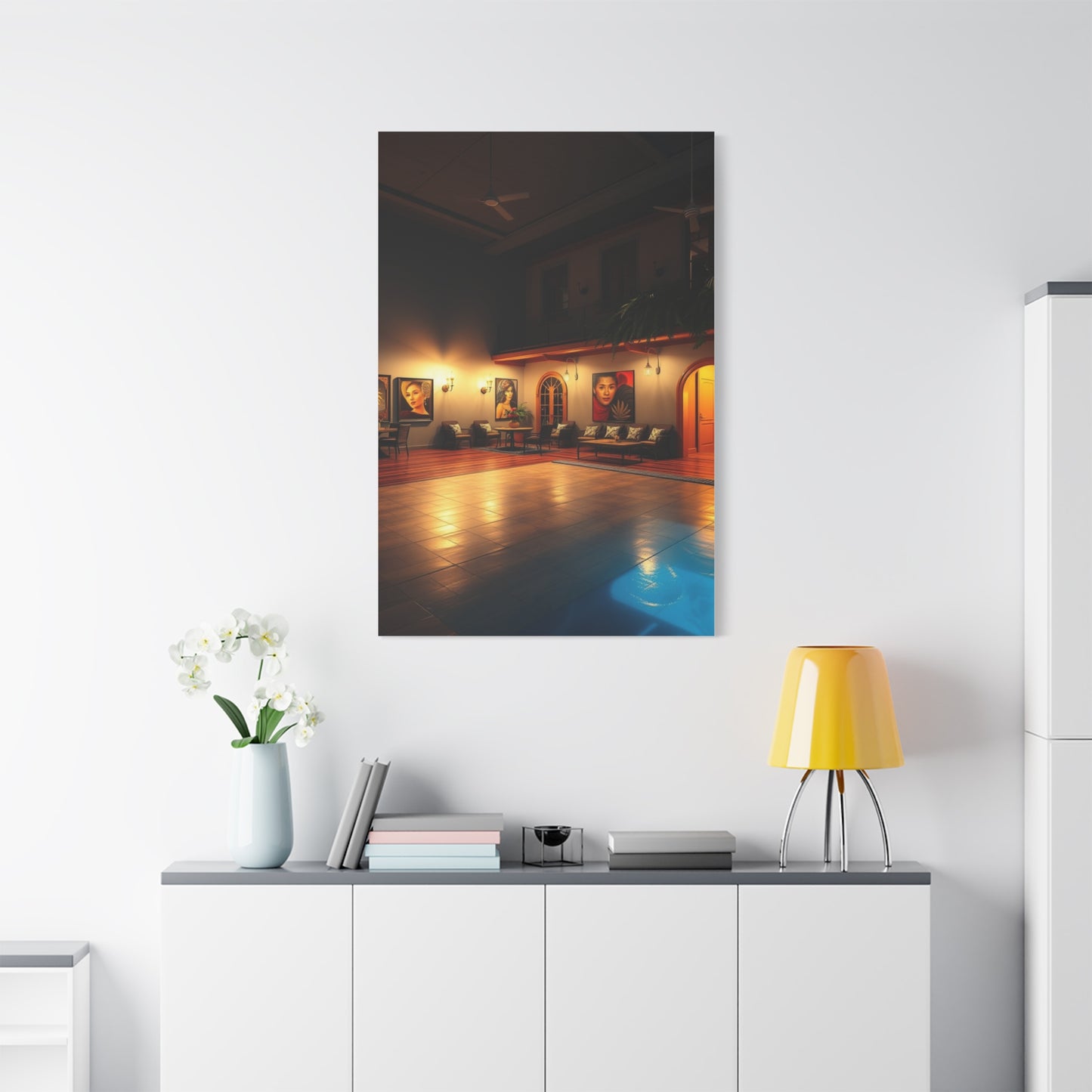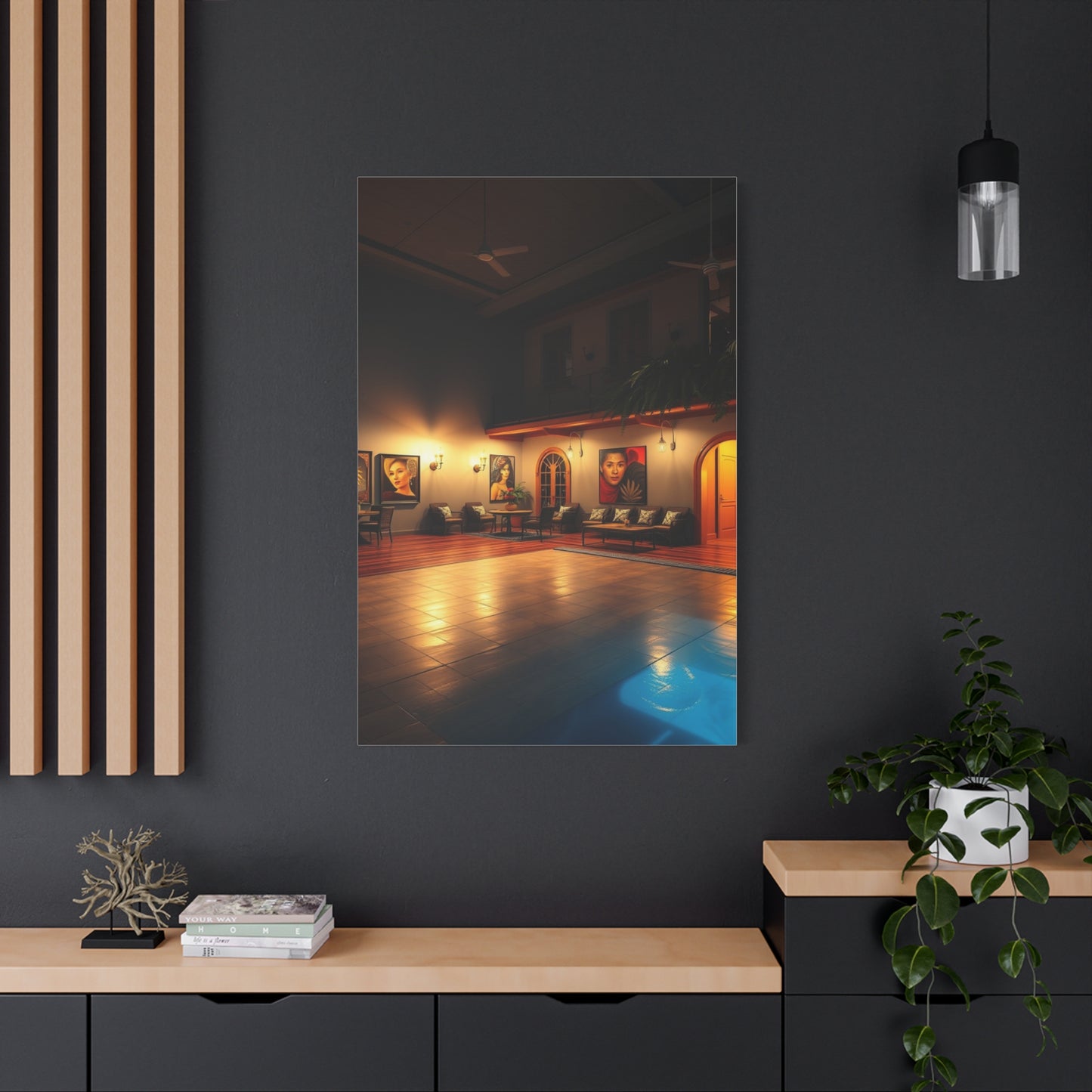Regal Hispanic Canvas Masterpieces Celebrating Cultural Heritage and Royal Elegance
Hispanic cultural heritage represents one of the most vibrant and diverse artistic traditions in the world, encompassing centuries of rich history, royal influences, and passionate artistic expression. When translated onto canvas as wall art, these cultural elements create magnificent pieces that bring both elegance and authenticity to any environment. The fusion of Hispanic cultural motifs with regal artistic elements produces canvas artwork that speaks to the soul while commanding attention and respect.
The appreciation for Hispanic wall art has grown tremendously as people seek meaningful decorative pieces that tell stories and reflect cultural depth. These canvas creations serve as windows into a world where passion meets precision, where traditional techniques blend with contemporary artistic vision, and where every brushstroke carries the weight of generations of artistic heritage.
Historical Foundations of Hispanic Artistic Heritage
The roots of Hispanic artistic expression stretch deep into history, drawing from indigenous pre-Columbian civilizations, Spanish colonial influences, and the unique cultural synthesis that emerged from their intersection. This rich tapestry of influences created a distinctive artistic language that continues to evolve while maintaining its core identity and cultural significance.
Pre-Columbian civilizations like the Aztecs, Mayans, and Incas developed sophisticated artistic traditions that emphasized geometric patterns, natural motifs, and spiritual symbolism. These ancient artistic elements laid the groundwork for what would eventually become the foundational aesthetic principles of Hispanic wall art. The intricate geometric designs, bold color palettes, and symbolic representations of nature and spirituality remain central to contemporary Hispanic canvas art.
The Spanish colonial period introduced European artistic techniques, religious iconography, and royal aesthetic sensibilities that would profoundly influence Hispanic artistic development. The marriage of indigenous artistic traditions with Spanish colonial artistry created a unique hybrid style that reflected both cultural heritage and imperial grandeur. This period saw the emergence of baroque influences, elaborate decorative elements, and the integration of religious and secular themes that continue to characterize Hispanic wall art today.
The post-colonial period brought new waves of artistic innovation as Hispanic artists began to reclaim and reinterpret their cultural heritage through contemporary artistic lenses. This period saw the emergence of distinctly Hispanic artistic movements that celebrated cultural identity while embracing modern artistic techniques and materials. Canvas became an increasingly popular medium for these artistic expressions, offering artists the flexibility to create works that could be easily displayed and appreciated in various settings.
Cultural Symbolism in Hispanic Canvas Art
Hispanic wall art on canvas frequently incorporates powerful cultural symbols that carry deep meaning and historical significance. These symbols serve as visual narratives that connect contemporary viewers with centuries of cultural heritage and artistic tradition. Understanding these symbolic elements enhances appreciation for the depth and complexity of Hispanic canvas art.
Religious symbolism plays a central role in much Hispanic wall art, reflecting the profound influence of Catholicism on Hispanic culture. Images of saints, religious scenes, and spiritual motifs appear frequently in canvas artwork, often rendered with the rich colors and dramatic lighting characteristic of Spanish baroque painting. These religious elements are often combined with indigenous spiritual symbols, creating layered compositions that speak to the complex spiritual heritage of Hispanic culture.
Nature symbolism is equally important in Hispanic canvas art, with artists frequently depicting elements like roses, birds, mountains, and celestial bodies. These natural elements often carry specific cultural meanings: roses might represent love and passion, birds could symbolize freedom or spiritual messages, and mountains might represent strength and permanence. The way these natural elements are rendered often reflects regional artistic traditions and local cultural interpretations.
Architectural motifs frequently appear in Hispanic wall art, celebrating the distinctive building styles that characterize Hispanic regions. These might include mission-style arches, ornate balconies, colorful facades, and decorative tiles. Such architectural elements in canvas art serve to evoke the physical environments where Hispanic culture flourished, creating a sense of place and cultural context within the artwork.
Regional Variations in Hispanic Wall Art Styles
Hispanic culture encompasses numerous regional variations, each contributing unique artistic traditions and aesthetic sensibilities to the broader Hispanic artistic heritage. These regional differences are clearly reflected in contemporary Hispanic wall art, offering collectors and enthusiasts a rich variety of stylistic approaches and cultural perspectives.
Mexican artistic traditions contribute bold colors, folk art influences, and revolutionary themes to Hispanic canvas art. Mexican-inspired wall art often features vibrant palettes dominated by deep reds, bright yellows, and rich blues, reflecting the country's passionate cultural temperament. Motifs might include traditional Mexican flowers like marigolds and dahlias, cultural icons like the Virgin of Guadalupe, and symbolic elements from Mexican folk traditions.
Spanish regional influences bring sophistication and royal elegance to Hispanic wall art. Spanish-inspired canvas pieces often feature more muted color palettes, classical composition techniques, and references to Spanish royal history and aristocratic culture. These works might incorporate elements from famous Spanish artistic movements, architectural details from historic Spanish buildings, and cultural motifs that reflect Spain's complex regional identities.
Caribbean Hispanic influences introduce tropical elements, vibrant energy, and unique cultural fusion into wall art. Canvas pieces inspired by Caribbean Hispanic culture might feature palm trees, tropical flowers, beach scenes, and architectural elements characteristic of Caribbean colonial buildings. The color palettes tend to be bright and energetic, reflecting the sunny, warm climate and festive cultural atmosphere of the Caribbean region.
South American Hispanic influences bring Andean motifs, indigenous artistic traditions, and distinctive color combinations to canvas art. These pieces might feature mountain landscapes, traditional textiles patterns, indigenous symbols, and artistic techniques that reflect the rich cultural heritage of countries like Peru, Ecuador, and Colombia. The artistic style often combines pre-Columbian aesthetic elements with Spanish colonial influences.
Contemporary Hispanic Artists and Canvas Innovation
Modern Hispanic artists continue to push the boundaries of traditional Hispanic wall art while maintaining deep connections to their cultural heritage. These contemporary creators bring fresh perspectives to classic themes while introducing innovative techniques and materials that expand the possibilities for Hispanic canvas art.
Contemporary Hispanic artists often blend traditional motifs with modern artistic techniques, creating canvas pieces that speak to both historical heritage and contemporary relevance. These artists might use traditional color palettes and symbolic elements while employing contemporary composition techniques, abstract elements, or mixed media approaches that give their work a distinctly modern feel.
Digital printing technologies have opened new possibilities for Hispanic wall art reproduction and distribution. High-quality canvas prints now allow for the widespread availability of Hispanic artistic works, making it possible for art enthusiasts to access museum-quality reproductions of both classic and contemporary Hispanic artwork. These technological advances have democratized access to Hispanic wall art while maintaining the visual impact and cultural significance of the original works.
Mixed media approaches have become increasingly popular among Hispanic artists creating canvas wall art. These artists might combine traditional painting techniques with collage elements, textile components, or three-dimensional additions that create textural interest and visual depth. Such approaches allow for greater artistic expression while maintaining connections to traditional Hispanic craft traditions.
Color Psychology in Hispanic Wall Art
The strategic use of color in Hispanic canvas art goes far beyond mere aesthetic appeal, incorporating deep psychological and cultural associations that enhance the emotional impact of these artistic works. Hispanic artists have traditionally been masters of color psychology, understanding how different hues can evoke specific emotional responses and create particular atmospheric effects.
Red dominates many Hispanic wall art pieces, carrying associations with passion, love, strength, and cultural pride. In Hispanic canvas art, red might appear as deep crimson roses, vibrant sunset skies, or bold architectural elements. The psychological impact of red in these contexts creates feelings of warmth, energy, and emotional intensity that reflect the passionate nature of Hispanic culture.
Blue appears frequently in Hispanic wall art, often representing spirituality, peace, and connection to natural elements like sky and water. Different shades of blue carry different psychological associations: deep blues might evoke feelings of stability and trust, while lighter blues create sensations of calm and serenity. In religious Hispanic canvas art, blue often appears in depictions of the Virgin Mary, carrying specific spiritual and cultural significance.
Yellow and gold tones in Hispanic wall art create associations with sunshine, happiness, prosperity, and divine light. These warm colors frequently appear in Hispanic canvas pieces as golden architectural details, sunny landscapes, or symbolic representations of spiritual illumination. The psychological effect of these warm tones creates feelings of optimism and joy that reflect the celebratory aspects of Hispanic culture.
Green elements in Hispanic canvas art often represent nature, growth, hope, and renewal. These might appear as lush vegetation, symbolic plant motifs, or landscape elements that connect the artwork to natural environments. The psychological impact of green creates feelings of harmony and balance while evoking connections to the natural world that remains central to Hispanic cultural identity.
Architectural Influences in Hispanic Canvas Art
Hispanic architectural traditions provide rich inspiration for wall art, with artists drawing from centuries of distinctive building styles that reflect the cultural fusion characteristic of Hispanic heritage. These architectural elements translate beautifully to canvas, creating artwork that celebrates both structural beauty and cultural significance.
Mission architecture influences appear frequently in Hispanic wall art, featuring the distinctive arched doorways, bell towers, and stucco walls that characterize Spanish colonial religious buildings. Canvas pieces incorporating these architectural elements often use warm earth tones and dramatic lighting effects that emphasize the sculptural quality of mission architecture while creating atmospheric depth and visual interest.
Moorish architectural influences, inherited from Spain's Islamic period, contribute intricate geometric patterns, horseshoe arches, and decorative tile motifs to Hispanic canvas art. These elements bring mathematical precision and ornate beauty to wall art pieces, creating compositions that celebrate both artistic craftsmanship and cultural diversity. The geometric patterns often serve as background elements that provide structure and visual rhythm to canvas compositions.
Colonial mansion architecture provides inspiration for Hispanic wall art featuring grand facades, ornate balconies, and decorative ironwork. These architectural elements translate to canvas as elegant compositional elements that suggest wealth, refinement, and cultural sophistication. Artists often use these architectural motifs to create atmospheric pieces that evoke the grandeur of Hispanic colonial period buildings.
Contemporary Hispanic architecture influences bring modern elements to traditional wall art themes, incorporating sleek lines, bold geometric forms, and innovative material combinations. These contemporary architectural influences allow Hispanic canvas art to remain relevant and contemporary while maintaining connections to historical architectural traditions.
Religious and Spiritual Themes in Hispanic Wall Art
Spiritual and religious elements form a cornerstone of Hispanic cultural identity, and these themes translate powerfully to canvas wall art. Hispanic religious art draws from both Catholic traditions and indigenous spiritual practices, creating complex layered compositions that speak to the diverse spiritual heritage of Hispanic culture.
Catholic religious imagery appears frequently in Hispanic canvas art, featuring saints, religious scenes, and sacred symbols rendered with the dramatic lighting and rich colors characteristic of Spanish baroque religious painting. These religious elements often serve as focal points for canvas compositions, creating artwork that functions both as decoration and as objects of spiritual contemplation and cultural pride.
Indigenous spiritual elements blend with Catholic imagery in many Hispanic wall art pieces, creating syncretic compositions that reflect the complex spiritual heritage of Hispanic culture. These might include pre-Columbian symbols, nature spirits, or traditional ceremonial elements integrated with Christian iconography in ways that honor both spiritual traditions while creating visually compelling canvas art.
Day of the Dead imagery has become increasingly popular in Hispanic wall art, featuring colorful skull motifs, floral decorations, and celebratory themes that reflect the unique Hispanic approach to death and remembrance. These canvas pieces often use vibrant colors and decorative elements that transform somber themes into celebrations of life and cultural continuity.
Miraculous and mystical themes appear in Hispanic canvas art through depictions of religious miracles, spiritual visions, and supernatural events. These pieces often employ dramatic visual techniques, ethereal lighting effects, and symbolic elements that create otherworldly atmospheres while maintaining connections to specific Hispanic religious traditions and cultural narratives.
Traditional Patterns and Motifs in Hispanic Canvas Art
Hispanic wall art incorporates a rich vocabulary of traditional patterns and motifs that have been passed down through generations of artists and craftspeople. These decorative elements carry cultural significance while providing visual structure and aesthetic appeal to canvas compositions.
Floral motifs dominate much Hispanic wall art, with roses, carnations, and hibiscus flowers appearing frequently as both realistic depictions and stylized decorative elements. These floral patterns often carry specific cultural associations: roses might represent romantic love, carnations could symbolize divine love, and hibiscus flowers might evoke tropical Hispanic regions. The way these floral motifs are rendered varies by regional tradition and individual artistic interpretation.
Geometric patterns derived from both Islamic and indigenous traditions provide structural elements for Hispanic canvas art. These might include interlacing designs, star patterns, or maze-like motifs that create visual rhythm and compositional unity. Such geometric elements often serve as background patterns that support figurative elements while adding visual interest and cultural authenticity to canvas compositions.
Textile-inspired patterns frequently appear in Hispanic wall art, drawing from the rich tradition of Hispanic weaving and fabric decoration. These might include traditional blanket patterns, embroidery motifs, or lace-like decorative elements that add textural interest to canvas pieces while referencing the important role of textile arts in Hispanic culture.
Animal motifs appear regularly in Hispanic canvas art, featuring creatures that hold special significance in Hispanic cultural traditions. Birds, particularly doves, eagles, and tropical species, often symbolize spiritual messages or freedom. Horses might represent nobility and strength, while butterflies could symbolize transformation and renewal. These animal motifs are often integrated into larger compositions as symbolic elements that add meaning and cultural depth.
The Role of Light and Shadow in Hispanic Canvas Art
Hispanic artists have traditionally been masters of chiaroscuro techniques, using dramatic contrasts between light and shadow to create emotional depth and visual drama in their canvas artwork. This sophisticated approach to lighting contributes significantly to the power and appeal of Hispanic wall art.
Dramatic lighting techniques create atmosphere and emotional intensity in Hispanic canvas pieces. Artists often use strong directional lighting that creates bold shadows and brilliant highlights, emphasizing the three-dimensional quality of subjects while creating theatrical effects that capture viewer attention. This dramatic lighting approach reflects the influence of Spanish baroque painting traditions while serving contemporary artistic purposes.
Golden hour lighting appears frequently in Hispanic wall art, particularly in landscape and architectural pieces. This warm, diffused lighting creates romantic and nostalgic moods that evoke the Mediterranean and Latin American climates where Hispanic culture flourished. Canvas pieces utilizing golden hour lighting often feature warm color palettes dominated by yellows, oranges, and warm reds that create inviting and emotionally appealing compositions.
Spiritual lighting effects serve important functions in religious Hispanic canvas art, with artists using ethereal light sources to indicate divine presence or spiritual significance. These might appear as halos around religious figures, shafts of light breaking through clouds, or mysterious glowing effects that create otherworldly atmospheres. Such lighting techniques help distinguish sacred subjects from mundane elements while creating compositions that inspire contemplation and reverence.
Architectural lighting emphasizes the structural beauty of Hispanic buildings depicted in canvas art. Artists might use lighting to highlight ornate decorative details, create dramatic shadows that emphasize architectural forms, or use backlighting techniques that create silhouette effects. These lighting approaches help translate the three-dimensional beauty of Hispanic architecture to the two-dimensional canvas medium.
Seasonal Celebrations in Hispanic Wall Art
Hispanic culture embraces numerous seasonal celebrations that provide rich inspiration for canvas wall art. These festive themes allow artists to explore cultural traditions while creating artwork that celebrates community, heritage, and the cyclical nature of cultural life.
Christmas celebrations in Hispanic culture bring unique artistic elements to canvas wall art, featuring traditional nativity scenes, posada processions, and distinctive Hispanic Christmas decorations. These pieces often incorporate warm earth tones, candlelight effects, and folk art elements that reflect the distinctive ways Hispanic communities celebrate the Christmas season. Artists might include traditional Christmas flowers like poinsettias, architectural elements from Hispanic churches, or scenes of family gatherings that emphasize the community-centered nature of Hispanic Christmas traditions.
Easter celebrations provide inspiration for Hispanic canvas art through depictions of religious processions, traditional foods, and spring renewal themes. These pieces often feature purple and gold color schemes, religious symbolism, and floral elements that reflect the spiritual significance and seasonal timing of Easter in Hispanic culture. Artists might incorporate traditional Easter elements like decorated eggs alongside distinctly Hispanic cultural elements.
Carnival and festival themes bring explosive color and energy to Hispanic wall art, featuring masked figures, parade scenes, and celebratory decorations. These canvas pieces often use the most vibrant color palettes in Hispanic art, with bright reds, yellows, blues, and greens creating compositions that pulse with festive energy. Artists might include traditional musical instruments, folk costumes, or street festival scenes that capture the joyous atmosphere of Hispanic celebrations.
Harvest celebrations provide inspiration for Hispanic canvas art through depictions of agricultural abundance, traditional foods, and autumnal color schemes. These pieces often feature warm earth tones, agricultural tools, and abundant produce that reflect the connection between Hispanic culture and the land. Artists might incorporate traditional harvest symbols, seasonal foods, or rural landscape elements that celebrate the agricultural foundations of many Hispanic communities.
Contemporary Market Trends in Hispanic Wall Art
The market for Hispanic canvas wall art has evolved significantly in recent years, reflecting changing consumer preferences, technological advances, and growing appreciation for cultural diversity in home decoration. Understanding these market trends helps both collectors and artists navigate the contemporary Hispanic art landscape.
Digital reproduction technologies have made high-quality Hispanic wall art more accessible to broader audiences. Advanced printing techniques now allow for museum-quality canvas reproductions that capture the subtlety and richness of original paintings while making Hispanic art available at various price points. This democratization of access has expanded the market for Hispanic wall art while creating new opportunities for both established and emerging artists.
Customization options have become increasingly popular in the Hispanic wall art market, with consumers seeking pieces that reflect their specific cultural heritage or personal aesthetic preferences. Artists and art retailers now offer services that allow customers to request specific color schemes, sizes, or cultural elements that make canvas pieces more personally meaningful while maintaining authentic Hispanic artistic characteristics.
Eco-friendly production methods are becoming increasingly important to consumers of Hispanic wall art. Canvas pieces produced using sustainable materials, non-toxic inks, and environmentally responsible production methods appeal to environmentally conscious consumers who want to support both cultural art and environmental protection. This trend has led to innovations in canvas materials and printing processes that maintain artistic quality while reducing environmental impact.
Online marketplace growth has transformed how Hispanic wall art reaches consumers, with digital platforms allowing artists to reach global audiences while providing consumers access to diverse selections of Hispanic canvas art. These online marketplaces have created new opportunities for emerging Hispanic artists while providing consumers with unprecedented access to authentic Hispanic artistic works from around the world.
Installation and Display Considerations for Hispanic Canvas Art
Proper installation and display of Hispanic wall art requires careful consideration of lighting, positioning, and environmental factors that will enhance the visual impact and longevity of canvas pieces. These practical considerations ensure that Hispanic artwork achieves its maximum aesthetic and cultural impact.
Lighting considerations play a crucial role in displaying Hispanic canvas art effectively. Natural lighting can enhance the rich colors characteristic of Hispanic artwork, but direct sunlight should be avoided to prevent fading and deterioration. Artificial lighting should be positioned to minimize glare while providing even illumination that brings out the depth and richness of Hispanic artistic elements. LED lighting systems offer excellent color rendering while generating minimal heat that could damage canvas materials.
Wall positioning affects how Hispanic canvas art interacts with surrounding architectural elements and furniture. Large Hispanic landscape or architectural pieces work well as focal points above sofas or dining tables, while smaller cultural motif pieces might be grouped to create gallery walls that tell cultural stories through visual narratives. The scale of canvas pieces should complement room proportions while allowing adequate visual breathing room around each artwork.
Climate control considerations help preserve Hispanic canvas art over time. Stable temperature and humidity levels prevent canvas materials from expanding and contracting in ways that could damage artwork. Areas with extreme temperature fluctuations, high humidity, or direct exposure to heating and cooling vents should be avoided when selecting locations for Hispanic wall art installations.
Security measures may be necessary for valuable Hispanic canvas art pieces, particularly original works or limited edition reproductions. These might include specialized hanging hardware, security lighting, or alarm systems that protect artwork while allowing normal viewing and appreciation. Insurance considerations should also be evaluated for valuable Hispanic art collections.
Color Coordination with Hispanic Wall Art
Integrating Hispanic canvas art into existing color schemes requires understanding how the rich, vibrant colors characteristic of Hispanic artwork interact with other decorative elements. Successful color coordination enhances both the artwork and the overall aesthetic appeal of the environment.
Complementary color schemes work well with Hispanic wall art by using colors opposite on the color wheel to create visual excitement and energy. If a Hispanic canvas piece features dominant warm colors like reds and oranges, surrounding elements in cool blues and greens can create dynamic contrast that makes the artwork pop while maintaining visual harmony. This approach allows the cultural richness of Hispanic art to take center stage while creating sophisticated color relationships.
Analogous color schemes use colors adjacent on the color wheel to create harmonious, soothing environments that support Hispanic canvas art without competing for attention. If a Hispanic piece features warm earth tones, surrounding colors in similar warm families can create cohesive environments that feel unified and peaceful while allowing the cultural elements of the artwork to shine through.
Monochromatic approaches use various shades and tints of a single color to create sophisticated environments that highlight the compositional and cultural elements of Hispanic wall art rather than competing color relationships. This approach can be particularly effective with Hispanic artwork featuring rich, complex compositions where color harmony allows viewers to focus on cultural symbolism and artistic technique.
Neutral backgrounds provide versatile foundations for Hispanic canvas art, allowing the rich colors and cultural elements of the artwork to dominate while maintaining flexibility for changing decorative schemes. Neutral walls in whites, beiges, or light grays can showcase Hispanic art effectively while providing timeless backgrounds that won't conflict with the cultural authenticity of the artistic pieces.
Size and Scale Considerations for Hispanic Canvas Art
Selecting appropriate sizes and scales for Hispanic wall art requires careful consideration of architectural proportions, viewing distances, and the intended impact of the artistic pieces. Proper scaling ensures that Hispanic canvas art achieves its maximum visual and cultural impact.
Large-scale Hispanic canvas pieces work well as statement artworks that serve as focal points for rooms. These might feature Hispanic landscape scenes, architectural subjects, or complex cultural compositions that benefit from substantial size to showcase artistic detail and cultural richness. Large pieces should be proportioned appropriately to wall size, with adequate surrounding visual breathing room to prevent overwhelming smaller architectural elements.
Medium-scale pieces offer versatility for various installation scenarios, working well as individual accent pieces or as components of gallery wall arrangements. Hispanic canvas art in medium sizes can effectively showcase cultural motifs, religious themes, or regional artistic styles while fitting comfortably into diverse architectural contexts. These sizes often provide the best balance between visual impact and installation flexibility.
Small-scale Hispanic wall art pieces work well for intimate viewing situations, detailed cultural studies, or as components of larger artistic arrangements. These might feature intricate traditional patterns, detailed religious iconography, or cultural symbols that benefit from close viewing distances. Small pieces can be effectively grouped to create narrative sequences that tell cultural stories through visual progression.
Series and grouping strategies allow multiple Hispanic canvas pieces to work together in creating comprehensive cultural statements. Artists and collectors might select pieces that share common themes, color palettes, or regional characteristics to create cohesive installations that provide deeper cultural education and visual impact than individual pieces might achieve alone.
Maintenance and Care for Hispanic Canvas Art
Proper maintenance and care ensure that Hispanic wall art retains its visual appeal and cultural significance over time. Canvas artwork requires specific care considerations that protect both the artistic and cultural value of these important pieces.
Regular cleaning routines help preserve Hispanic canvas art without damaging delicate artistic surfaces. Gentle dusting with soft, dry brushes removes surface accumulation without affecting paint layers or canvas materials. Cleaning should be performed regularly but gently, avoiding harsh chemicals or excessive moisture that could damage artistic elements or cultural symbols rendered in traditional pigments.
Environmental protection measures shield Hispanic wall art from factors that could cause deterioration over time. This includes protection from direct sunlight, extreme temperature fluctuations, high humidity, and air pollutants that could affect canvas materials or artistic pigments. Proper environmental control helps preserve both the visual appeal and cultural authenticity of Hispanic artistic works.
Professional conservation services may be necessary for valuable Hispanic canvas art pieces, particularly original works or historically significant reproductions. Professional conservators understand the specific materials and techniques used in Hispanic art creation and can provide specialized care that preserves cultural authenticity while maintaining artistic integrity.
Documentation and provenance records help maintain the cultural and economic value of Hispanic wall art collections. Proper documentation includes artist information, cultural significance explanations, acquisition records, and condition reports that support both personal enjoyment and potential future value considerations.
Cultural Education Through Hispanic Wall Art
Hispanic canvas art serves important educational functions, providing opportunities for cultural learning and appreciation that extend beyond mere aesthetic enjoyment. These educational aspects make Hispanic wall art valuable additions to both residential and institutional settings.
Historical education opportunities arise through Hispanic wall art that depicts significant cultural events, historical figures, or traditional practices. Canvas pieces featuring historical themes can spark conversations about Hispanic cultural heritage, encouraging viewers to learn more about the rich history and diverse traditions that shape contemporary Hispanic culture. This educational function makes Hispanic art valuable for both personal enrichment and broader cultural understanding.
Cultural symbolism education helps viewers understand the deeper meanings embedded in Hispanic artistic traditions. Canvas pieces incorporating traditional symbols, religious imagery, or cultural motifs provide opportunities to explore the significance of these elements within Hispanic culture. This educational aspect adds depth and meaning to artistic appreciation while promoting cross-cultural understanding and respect.
Regional diversity education emerges through Hispanic wall art that represents different geographical and cultural regions within the broader Hispanic heritage. Canvas pieces featuring Mexican, Spanish, Caribbean, or South American artistic traditions help viewers understand the diversity and richness within Hispanic culture while appreciating the unique contributions of different regional traditions.
Language connection opportunities may arise through Hispanic canvas art featuring text elements, cultural sayings, or traditional expressions. These linguistic elements can encourage language learning while providing cultural context that enhances both artistic and educational value.
Investment Potential of Hispanic Canvas Art
Hispanic wall art represents both cultural enrichment and potential investment opportunities, with certain categories of Hispanic canvas art showing appreciation potential that makes them attractive to collectors and investors interested in cultural art markets.
Original Hispanic artwork by recognized artists often appreciates significantly over time, particularly pieces that represent important cultural movements, historical periods, or innovative artistic techniques. These investment-grade pieces require careful evaluation of artist reputation, historical significance, condition, and market demand factors that influence long-term value potential.
Limited edition reproductions of significant Hispanic artistic works can offer more accessible investment opportunities while providing authentic cultural art for display purposes. These pieces often appreciate modestly over time while offering immediate cultural and aesthetic value that justifies acquisition regardless of investment considerations.
Emerging artist works represent speculative investment opportunities in the Hispanic art market, with pieces by promising new artists potentially offering significant appreciation if the artists achieve broader recognition and market success. These investments require careful evaluation of artistic quality, cultural authenticity, and market positioning factors that influence success potential.
Market trend analysis helps guide investment decisions in Hispanic canvas art, with growing appreciation for cultural diversity and Hispanic cultural contributions creating favorable conditions for Hispanic art appreciation. Understanding demographic trends, cultural movements, and artistic developments helps inform intelligent investment strategies in Hispanic wall art markets.
Regional Collecting Specializations in Hispanic Art
Different regions of Hispanic cultural heritage offer distinct collecting specializations that allow collectors to focus on specific cultural traditions, artistic styles, or historical periods within the broader Hispanic artistic universe.
Mexican art collecting specializations might focus on revolutionary period works, folk art traditions, religious imagery, or contemporary Mexican artistic movements. Mexican Hispanic wall art often features bold colors, political themes, and distinctive cultural symbols that reflect Mexico's complex history and vibrant contemporary culture. Collectors might specialize in works from specific Mexican regions, artistic movements, or time periods that align with personal interests or cultural connections.
Spanish art collecting focuses on works that reflect Spain's rich artistic heritage, from medieval influences through contemporary developments. Spanish Hispanic canvas art might feature architectural motifs from historic Spanish buildings, references to Spanish royal history, or contemporary interpretations of traditional Spanish artistic themes. Regional Spanish specializations might include Andalusian, Catalonian, or Basque artistic traditions that reflect Spain's diverse cultural landscape.
Caribbean Hispanic art collecting encompasses the unique cultural fusion that characterizes Caribbean Hispanic regions, including Puerto Rico, the Dominican Republic, and Cuba. Caribbean Hispanic wall art often features tropical motifs, colonial architectural references, and the distinctive color palettes that reflect Caribbean climate and culture. Political and social themes may also appear in Caribbean Hispanic art, reflecting the complex history of these regions.
South American Hispanic art collecting includes works from countries like Colombia, Peru, Ecuador, and Venezuela that reflect the distinctive cultural characteristics of these regions. South American Hispanic canvas art might feature Andean motifs, indigenous artistic influences, or contemporary interpretations of pre-Columbian artistic traditions. The diversity of South American Hispanic culture provides numerous specialization opportunities for focused collectors.
Seasonal Display Strategies for Hispanic Wall Art
Hispanic culture's rich calendar of seasonal celebrations and cultural events provides opportunities for rotating display strategies that keep Hispanic wall art fresh and culturally relevant throughout the year.
Spring display strategies might emphasize Hispanic canvas art featuring renewal themes, Easter celebrations, or fresh floral motifs that reflect the season's energy and optimism. Hispanic artwork featuring garden scenes, religious spring celebrations, or traditional spring festivals can create seasonally appropriate displays that honor both natural cycles and cultural traditions.
Summer displays could focus on Hispanic wall art celebrating warm weather activities, harvest preparations, or summer festival themes. Canvas pieces featuring beach scenes from Hispanic coastal regions, summer agricultural activities, or traditional summer celebrations can create displays that reflect the season's energy while maintaining cultural authenticity and relevance.
Autumn arrangements might feature Hispanic art celebrating harvest themes, traditional autumn foods, or preparation for winter celebrations. Hispanic canvas pieces depicting agricultural abundance, traditional crafts preparation, or autumn landscape scenes can create seasonal displays that honor both natural cycles and cultural traditions associated with harvest times.
Winter displays often center around Hispanic Christmas and New Year traditions, featuring religious celebrations, family gathering themes, or traditional winter activities. Hispanic wall art depicting nativity scenes, posada celebrations, or winter landscape scenes from Hispanic regions can create seasonal displays that celebrate both religious and cultural winter traditions.
Hispanic Wall Art Display
Contemporary technology offers new possibilities for displaying and experiencing Hispanic canvas art while maintaining respect for traditional cultural elements and artistic integrity.
Digital frame integration allows for rotating displays of Hispanic wall art collections, enabling viewers to experience multiple pieces in the same location while maintaining the visual impact of large-scale canvas presentations. High-resolution digital displays can showcase Hispanic art with exceptional color accuracy while providing educational information about cultural significance and artistic techniques.
Augmented reality applications can enhance Hispanic wall art viewing experiences by providing additional cultural context, historical information, or interactive elements that deepen understanding and appreciation. These technological enhancements can make Hispanic art more educational while maintaining respect for traditional cultural elements and artistic integrity.
Lighting automation systems can optimize display conditions for Hispanic canvas art throughout daily and seasonal cycles, ensuring optimal viewing conditions while protecting artwork from harmful light exposure. Smart lighting systems can adjust color temperature, intensity, and direction to enhance different Hispanic art pieces while maintaining conservation standards.
Security integration technologies provide protection for valuable Hispanic art collections while allowing normal viewing and appreciation. Modern security systems can monitor environmental conditions, detect unauthorized access, and provide remote monitoring capabilities that protect Hispanic wall art investments while maintaining accessibility for legitimate viewing.
Trends in Hispanic Wall Art
The Hispanic wall art market continues to evolve, influenced by technological advances, changing cultural awareness, and growing appreciation for diverse artistic traditions. Understanding emerging trends helps collectors, artists, and enthusiasts anticipate future developments in Hispanic canvas art.
Sustainability trends are increasingly influencing Hispanic wall art production, with artists and manufacturers adopting eco-friendly materials, production processes, and distribution methods that reduce environmental impact while maintaining artistic quality and cultural authenticity. These sustainable practices appeal to environmentally conscious consumers while preserving traditional Hispanic artistic values.
Global connectivity is expanding markets for Hispanic wall art, with digital platforms enabling Hispanic artists to reach international audiences while providing global consumers access to authentic Hispanic artistic works. This increased connectivity promotes cultural exchange while creating new opportunities for Hispanic artists to share their cultural heritage through canvas art.
Customization technologies enable personalized Hispanic wall art that reflects individual cultural connections while maintaining artistic integrity and cultural authenticity. Advanced printing and production technologies allow for custom sizing, color adjustments, and cultural element selections that make Hispanic art more personally meaningful while respecting traditional artistic principles.
Educational integration trends see Hispanic wall art increasingly used in educational settings to promote cultural understanding, language learning, and historical awareness. These educational applications create new markets for Hispanic canvas art while promoting broader cultural appreciation and understanding.
Conclusion
Hispanic wall art on canvas represents far more than simple decoration; it embodies centuries of rich cultural heritage, artistic innovation, and passionate expression that continues to evolve while maintaining deep connections to traditional roots. From the ancient pre-Columbian civilizations that first developed sophisticated artistic traditions to contemporary Hispanic artists who blend traditional motifs with modern techniques, this artistic heritage provides an inexhaustible source of inspiration and cultural enrichment.
The power of Hispanic canvas art lies in its ability to communicate across cultural boundaries while maintaining authentic connections to specific regional traditions and historical contexts. Whether featuring bold Mexican revolutionary themes, elegant Spanish architectural motifs, vibrant Caribbean tropical scenes, or mysterious Andean mystical elements, Hispanic wall art speaks to universal human experiences while celebrating the unique cultural perspectives that make Hispanic heritage so richly diverse and compelling.
Contemporary market trends demonstrate growing appreciation for Hispanic wall art as consumers increasingly seek meaningful decorative pieces that tell stories, reflect cultural depth, and provide educational opportunities. The accessibility provided by advanced reproduction technologies has democratized access to Hispanic artistic masterpieces while creating new opportunities for emerging Hispanic artists to share their cultural perspectives with global audiences. This technological evolution has not diminished the cultural significance of Hispanic art but has instead expanded its reach and influence.
The investment potential of Hispanic canvas art reflects not only its aesthetic appeal but also growing recognition of the economic and cultural value of diverse artistic traditions. As cultural diversity becomes increasingly valued in contemporary society, Hispanic wall art represents both immediate aesthetic gratification and long-term cultural investment that can appreciate financially while providing ongoing educational and emotional enrichment for owners and viewers.
The educational functions of Hispanic wall art extend far beyond artistic appreciation, providing opportunities for cultural learning, historical understanding, and cross-cultural communication that promote broader social understanding and respect. These educational aspects make Hispanic canvas art valuable additions to both residential and institutional settings where cultural education and appreciation are valued goals.
Looking toward the future, Hispanic wall art will undoubtedly continue evolving as new generations of Hispanic artists bring fresh perspectives to traditional themes while embracing technological innovations that expand artistic possibilities. However, this evolution will occur within the context of deep respect for cultural heritage and traditional artistic values that have sustained Hispanic artistic traditions through centuries of social, political, and economic change.
The enduring appeal of Hispanic canvas wall art reflects its ability to combine visual beauty with cultural meaning, creating artwork that enriches environments while educating and inspiring viewers. Whether acquired for personal enjoyment, cultural education, or investment purposes, Hispanic wall art provides lasting value that grows deeper with understanding and appreciation. The rich tapestry of Hispanic cultural heritage ensures that this artistic tradition will continue providing inspiration and meaning for future generations while maintaining its authentic connections to the passionate, diverse, and enduring cultural heritage from which it springs.
In our increasingly interconnected world, Hispanic wall art serves as a bridge between cultures, providing opportunities for people of all backgrounds to appreciate the beauty, complexity, and richness of Hispanic cultural heritage. This cross-cultural appreciation promotes understanding, respect, and unity while celebrating the unique contributions that Hispanic culture brings to the global artistic community. The future of Hispanic canvas art remains bright, supported by centuries of cultural tradition and energized by contemporary innovation and growing global appreciation.

















